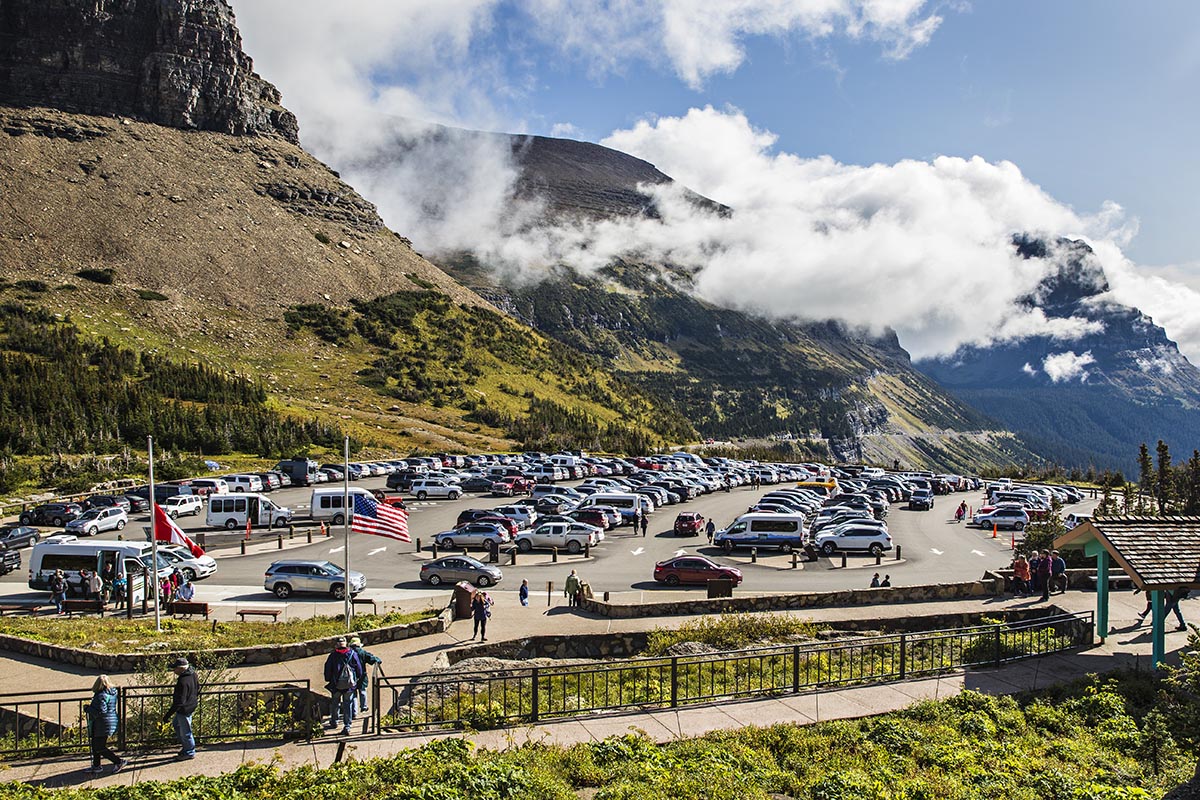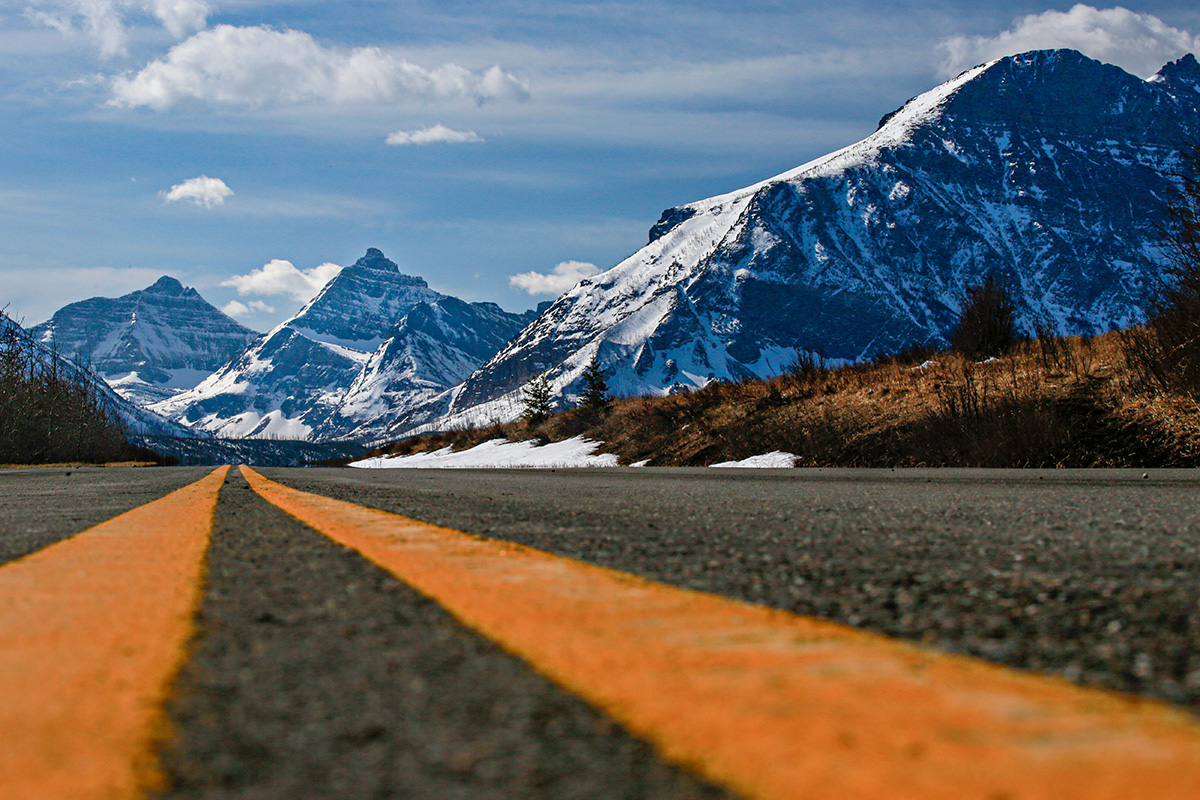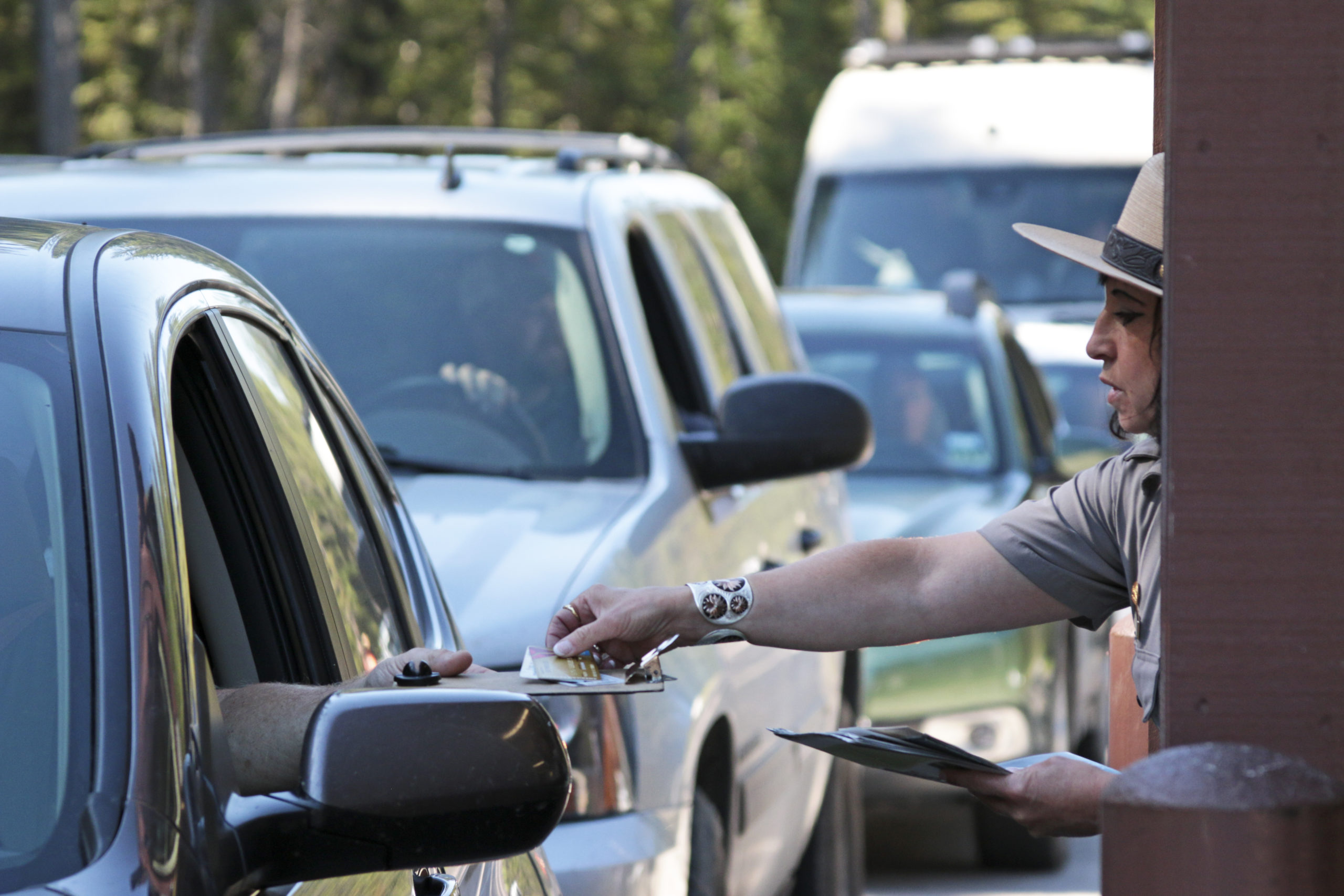
Glacier National Park Unveils Ticketed Entry System for Sun Road
COVID-19 mitigations, road construction and a pent-up demand for travel are several factors that prompted the new strategy to manage congestion problems in and around the park
Glacier National Park officials on Wednesday unveiled a temporary ticketed entry system for motorists entering the Going-to-the-Sun Road corridor this summer, adopting the strategy in an effort to help manage congestion and avoid the need for closures as a confluence of challenges related to ongoing COVID-19 mitigations, road construction and industrial-strength tourism comes to bear on the scenic byway.
Beginning May 28, visitors will need a ticketed reservation to enter the park’s 50-mile alpine thoroughfare from either end, both from the entrances at West Glacier and at St. Mary. The day-use ticket will become available through the online portal recreation.gov beginning April 29, barring any unforeseen delays. Visitors must purchase the tickets in advance and in addition to their park passes, though visitors with proof of service reservations inside the park — for lodging, camping, boat rides, bus tours, guided hikes, or horseback rides — will be exempt from the added reservation requirement.
Approximately 75% of the entry reservations will be available up to 60 days in advance, with the remaining tickets set aside for release two days in advance in order to accommodate more spontaneous visits, both from locals and drive-in markets.
Visitors entering the park at Many Glacier, Two Medicine, Polebridge, or along U.S. Highway 2 will not need an online reservation ticket.
According to Glacier Park Superintendent Jeff Mow, the ticketed entry system offers visitors an enhanced degree of certainty that they will be able to enter the park’s most popular entrances while reducing or eliminating the need for closures. The system is being introduced on the heels of a 2020 season that saw an unprecedented number of closures, and in advance of what administrators expect could be the busiest season for visitation in the park’s 111-year history. The system does not guarantee visitors a parking space, Mow stressed, adding that he expects parking at popular areas such as Logan Pass and Avalanche will continue to be a challenge.
“We have the making of a perfect storm this season,” Mow stated in a press release announcing the ticketed entry system. “Not only do we have ongoing COVID-19 mitigations and reduced staffing, but we are also facing construction delays inside and around the park.”

Dubbed the Crown Jewel of the National Park Service, Glacier Park is not alone in its struggle to manage surging crowds and safeguard its natural resources in such a way that fulfills a dual mission spelled out in the Organic Act of 1916 — “to preserve and protect while providing for the common enjoyment.” Other units of the national parks system, like Rocky Mountain and Yosemite national parks, are also grappling with escalating visitation while bracing for other challenges they expect will accompany the upcoming summer season.
Indeed, some of the National Park Service’s most popular units were preparing to debut similar ticketed-entry systems this week as Glacier revealed the details of its long-awaited plan, which park administrators have been refining for months as Mow “socialized” the strategy at a series of informational public meetings, stopping short of arriving at a final decision pending approval from his national supervisors. Within an hour of Glacier’s announcement Wednesday, Rocky Mountain National Park revealed the details of its own timed entry permit reservation system, which is also set to begin on May 28. Other parks are expected to follow suit, providing further evidence that rampant tourism is proving inimical to some aspects of public lands management, local culture, wildlife, and natural resources.
With Glacier’s decision finalized, Mow and his communications team will begin mounting an aggressive public-relations campaign to prepare visitors and set realistic expectations for the challenges they’re likely to encounter, including helping them navigate the new system.
“The goal is to maximize access while avoiding congestion that results in temporary closures of park entrance gates,” Mow stated.
Although dramatic changes at Glacier Park are rarely met with blanket support, and the ticketed-entry system has received pushback from some segments of the local community, Mow hopes the nascent management strategy will help ease the challenges he anticipates dominating much of the summer, the logistics of which he’s calibrating to match forecasts for a high, pent-up demand for travel, as well as an increase in air service to Glacier Park International Airport.
Dylan Boyle, executive director of the Whitefish Convention and Visitors Bureau (Explore Whitefish), said Glacier’s ticketed entry system is well aligned with the CVB’s new sustainable tourism campaign, dubbed “Be a Friend of the Fish,” which aims to balance the economic viability of the tourism industry with community, social, and environmental impacts.
Although the campaign was originally introduced to visitors and locals this winter to promote COVID-safe behavior, Boyle said it will now take on an “expanded form to invite visitors to support and enjoy the Whitefish community while taking care of the place and giving back.”
“Requiring ticketed entry for Going-to-the-Sun Road this summer is a good step toward creating the best visitor experience possible,” Boyle explained in a prepared statement. “We hope this management tool will mitigate the overcrowding we witnessed last summer. We also encourage locals to utilize the reservation system, remembering to plan ahead for their excursions.”
“With reservations, people can be more confident in their trip planning,” he added. “This is very much in line with how we will be communicating with visitors this summer. We’re asking everyone to plan ahead, slow down, and be flexible with a back up plan.”
Under the ticketed-entry system, motorists along the Going-to-the-Sun Road accessing the park at West Glacier or St. Mary are required to buy a $2 entry ticket through recreation.gov. The tickets are required from May 28 through Sept. 6, between the hours of 6 a.m. and 5 p.m., and they are required in addition to a park pass.
Tribal members and private property inholders are exempt from purchasing a ticket.
Numbers will be tracked each day and additional entry reservation tickets will become available if there is additional capacity. There will be fewer entry reservation tickets available prior to the full opening of the Sun Road, which remains buried in snow. When the road opens, the number of entry reservation tickets available will increase. The date for the Sun Road’s full opening is unknown at this time and subject to weather and plowing progress. The park plans to start plowing the Sun Road on April 5.
According to Mow, based on the numbers he’s crunched, the “vast majority” of visitors would be able to purchase entry tickets, while he expects the park would bump up against the reservation quota and have to refuse reservations to some visitors about 26 days during the course of the summer, or one-third of the busiest days.

Last summer, in the throes of a pandemic, those peaks in visitation triggered closures at Glacier Park’s popular west entrance on 29 occasions in 25 days, with 18 of those closures occurring in June, before the Going-to-the-Sun Road had even opened to its high point at Logan Pass, atop the Continental Divide. The remaining closures occurred in August and around Labor Day weekend, after the Sun Road had opened to Rising Sun Campground, at which point motorists were forced to turn around due to closures on the Blackfeet Indian Reservation.
Congestion related to those closures became so badly bottlenecked that it gridlocked traffic well beyond the park’s border, snarling traffic along U.S. Highway 2 for miles. If those circumstances were to repeat themselves this summer, they’ll be exacerbated by a months-long pavement preservation project spanning a 40-mile segment of U.S. Highway 2 from Hungry Horse to Essex, which serves as the park’s key exterior corridor. Road repair work is also scheduled for nearly every other corner of the park, including the popular Many Glacier Valley.
So far this year, the biggest factor working in Glacier National Park’s favor is the Blackfeet Tribe’s decision to allow the park’s eastern entrances to reopen for the 2021 visitor season. Tribal leaders based that decision on a vaccination rate nearing 100% among eligible enrolled Blackfeet members, as well as on the recent adoption of a new set of guidelines for reopening the reservation’s economy.
The unanimous vote came one year after tribal leaders declared a state of emergency due to the COVID-19 pandemic, a grim milestone that members of the Blackfeet community observed on March 15 by paying respects to the 47 tribal members who died as a result of the virus, as well as by celebrating the lives saved due to the aggressive steps that Blackfeet officials took to protect the reservation’s most vulnerable residents.
Glacier Park officials still haven’t announced whether the free shuttle system will be back online this summer, and if it does return, it will run at a reduced capacity to comply with COVID-19 restrictions and social distancing, Mow said.
Meanwhile, Mow is grappling with a staffing shortage of roughly 70 employees due to COVID-19 mitigation measures requiring every staff member have their own bedroom, which will mean fewer services can open up inside the park, including popular campgrounds at St. Mary and Rising Sun.
“We really do have a confluence of issues coming to bear on our 2021 visitor season. And what we want to do is take the edge off peak demand, particularly at the west entrance, and hopefully eliminate the need to have closures,” Mow said. “But if we have to implement closures, we’d like to do it in a way that’s not surprising to the public. We’d like to do it in a way that doesn’t require us turning people back at the gates. And that’s the concept for ticketed entry.”
In addition to problems associated with rising visitation, park officials say they’ve begun encountering challenges related to a new strain of visitor frequenting Glacier National Park, one lacking a basic comprehension of “Leave No Trace” principles and without a fundamental understanding of the etiquette one must adopt to travel in a wilderness environment, particularly in one of the last intact ecosystems in the northern hemisphere. For example, last summer Glacier Park personnel reported an unprecedented number of instances involving visitors bringing dogs onto trails where they are restricted; camping in undesignated areas or without a permit; and urinating and defecating along trails, resulting in “toilet paper blooms.”
“We are really going to be emphasizing a back-to-the basics approach to etiquette this summer,” Mow said. “This isn’t Leave No Trace 2.0. This is Leave No Trace 0.5.”